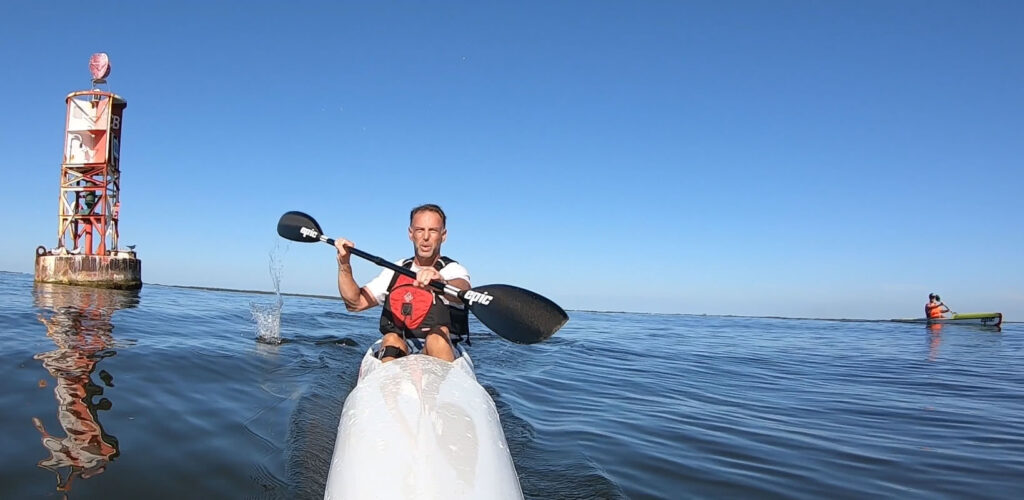This is the first in a series of articles of tips and hacks to help you go 10% faster in your next race. Obviously, since you’re here, you realize the most important thing you can do is get on a systematic training plan, but these tips can help you eke even more speed out of your training. For some athletes, implementing just one of these tips will net you a 10% gain. For others, combining the tips in these articles will produce that 10% improvement at your next race.
What is “Fartlek Racing”?
You may be familiar with the concept of Fartlek Training, which is an unstructured training session in which you alternate speedwork and easier pacing any way you want. For example, you might paddle easy to that pier, and then go hard until you reach that mega-yacht moored up ahead. Then you might go easy until you reach the end of the mega-yacht and resume your harder pace until you reach that pelican perched on that dock (you get to make up your own rule if the pelican flies away, I guess).
Fartlek Training consists of completely unstructured intervals of higher speed and lower speed. You essentially get to make up the intervals. And it’s a great way to do some stress free training without being tethered to a watch, while still working on mental strength and physical speed.
“Fartlek Racing” utilizes a similar approach, in which you race at a given speed/effort, with unstructured bursts of very hard effort. So your next race might look like this: start hard and get in a good position, then settle into what we call the “Orange Zone”, your race pace for the day (staying out of the “Red Zone”, in which you go anaerobic).
Then, start sprinkling hard “intervals” throughout your race. Take up the intensity until you reach that pier, or that tree. Then settle back into your race pace. Turn up the pace to catch that paddler who has been staying just a few yards ahead of you. Then return to the Orange Zone. Put on a burst of speed for 100 strokes and see if that paddler who is drafting behind you can hang. If they can, settle back into your Orange Zone for a while, and then try again, maybe for 150 strokes this time. At the next corner, put on a surge of effort to see if you can create a gap behind you.
The key to Fartlek Racing is settling back to your Orange Zone, your race pace, between the bursts of speed. It’s up to you how hard and how long these bursts of speed are — if you’re well-conditioned and have been on a good training plan, you should be able to handle these accelerations during your race and still return to your race pace in between.
Key Point: The difference between Fartlek Training and Fartlek Racing is that, when racing, your “easy” intervals aren’t all that easy. They’re just easier than the speedy parts. If you’ve been following a full training plan, you will have practiced intervals like this and you’ll know how hard you go with your speedplay and not blow up.
Some Advantages of Fartlek Racing

- It results in faster overall speed. By adding bursts of higher intensity to your race, rather than just grinding along, you’ll increase your average speed (and thus decrease your race time).
- It messes with your opponents’ minds. Try it. This type of race strategy will can really wear down that paddler who is trying to keep up with you. The random nature of your bursts of speed can become very uncomfortable for them, both physically and mentally.
- It create “mini-goals”, which are more achievable than one big goal of just going as hard as you can the entire race. (Hint: Going as hard you can the entire race isn’t really possible for most athletes…unless you’re doing a sprint race.)
- It relieves boredom It’s very easy to slip into a comfortable groove (especially during longer races, like Chattajack) and find your overall speed gradually slipping as you happily muddle along. By adding Fartlek intervals to your race, you’ll snap your mind and body back into “race mode”.
As you train for your next race, think about adding Fartlek Racing to your race strategy. If you’re trained up properly and have built the physical and mental strength to handle these surges during your race, you’re going to pleasantly surprised with your results.







